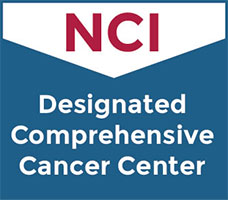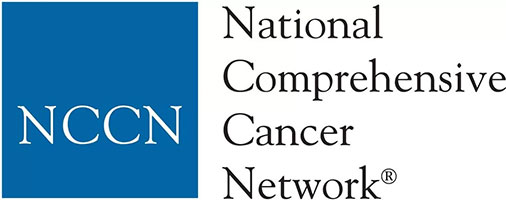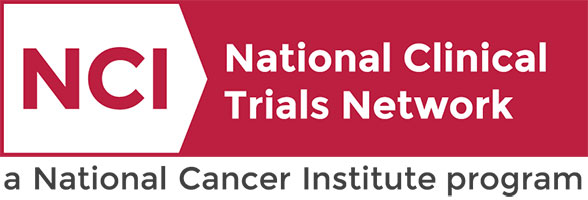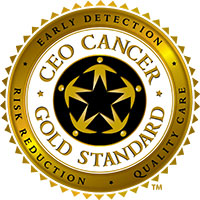Physician Search
 |
 |
| Consuelo Wilkins, MD, MSCI, Senior Vice President for Health Equity and Inclusive Excellence for Vanderbilt University Medical Center (VUMC) and Senior Associate Dean for Health Equity and Inclusive Excellence for Vanderbilt University School of Medicine, always knew she wanted to be a physician. "Health equity was built into everything I did, even if I didn’t know it or recognize it at the time," Wilkins said. "I have always learned and believed that people are the same — everyone deserves to be healthy, and everyone should have the best opportunities to take care of themselves and their families." Click below to learn more about health equity initiatives. https://momentum.vicc.org/2021/09/everyone-deserves-to-be-healthy/ |
Vanderbilt was the lead site for an NIH-funded, phase 2, multicenter influenza vaccine study in pediatric allogeneic hematopoietic stem cell transplant (HCT) recipients that may lead to a change in the current flu vaccine recommendations in this vulnerable population. Natasha Halasa, MD, MPH and colleagues recently published in the New England Journal of Medicine, that two doses of high-dose trivalent flu vaccine resulted in higher amounts of influenza-specific antibodies than two doses of standard dose quadrivalent vaccine. https://news.vumc.org/2023/03/02/high-dose-flu-vaccine-beneficial-for-pediatric-stem-cell-transplant-patients/ |
Ensartinib in Treating Patients with Relapsed or Refractory Advanced Solid Tumors, Non-Hodgkin Lymphoma, or Histiocytic Disorders with ALK or ROS1 Genomic Alterations (A Pediatric MATCH Treatment Trial)
Multiple Cancer Types
This phase II Pediatric MATCH trial studies how well ensartinib works in treating patients with solid tumors, non-Hodgkin lymphoma, or histiocytic disorders with ALK or ROS1 genomic alterations that have come back (recurrent) or does not respond to treatment (refractory) and may have spread from where it first started to nearby tissue, lymph nodes, or distant parts of the body (advanced). Ensartinib may stop the growth of tumor cells by blocking some of the enzymes needed for cell growth.
Germ Cell (Pediatrics),
Miscellaneous,
Neuroblastoma (Pediatrics),
Pediatric Lymphoma,
Pediatric Solid Tumors,
Pediatrics,
Wilms / Other Kidney (Pediatrics)
II
Borinstein, Scott
NCT03213652
COGAPEC1621F
A Study to Compare Early Use of Vinorelbine and Maintenance Therapy for Patients with High Risk Rhabdomyosarcoma
Multiple Cancer Types
This phase III trial compares the safety and effect of adding vinorelbine to vincristine, dactinomycin, and cyclophosphamide (VAC) for the treatment of patients with high risk rhabdomyosarcoma (RMS). High risk refers to cancer that is likely to recur (come back) after treatment or spread to other parts of the body. This study will also examine if adding maintenance therapy after VAC therapy, with or without vinorelbine, will help get rid of the cancer and/or lower the chance that the cancer comes back. Vinorelbine and vincristine are in a class of medications called vinca alkaloids. They work by stopping cancer cells from growing and dividing and may kill them. Dactinomycin is a type of antibiotic that is only used in cancer chemotherapy. It works by damaging the cells deoxyribonucleic acid (DNA) and may kill cancer cells. Cyclophosphamide is in a class of medications called alkylating agents. It works by damaging the cells DNA and may kill cancer cells. It may also lower the bodys immune response. Vinorelbine, vincristine, dactinomycin and cyclophosphamide are chemotherapy medications that work in different ways to stop the growth of cancer cells, either by killing the cells, by stopping them from dividing, or by stopping them from spreading. This trial may have the potential to eliminate rhabdomyosarcoma for a long time or for the rest of patients life.
Pediatrics,
Sarcoma
III
Borinstein, Scott
NCT04994132
COGARST2031
Inotuzumab Ozogamicin and Post-Induction Chemotherapy in Treating Patients with High-Risk B-ALL, Mixed Phenotype Acute Leukemia, and B-LLy
Multiple Cancer Types
This phase III trial studies whether inotuzumab ozogamicin added to post-induction chemotherapy for patients with High-Risk B-cell Acute Lymphoblastic Leukemia (B-ALL) improves outcomes. This trial also studies the outcomes of patients with mixed phenotype acute leukemia (MPAL), and B-lymphoblastic lymphoma (B-LLy) when treated with ALL therapy without inotuzumab ozogamicin. Inotuzumab ozogamicin is a monoclonal antibody, called inotuzumab, linked to a type of chemotherapy called calicheamicin. Inotuzumab attaches to cancer cells in a targeted way and delivers calicheamicin to kill them. Other drugs used in the chemotherapy regimen, such as cyclophosphamide, cytarabine, dexamethasone, doxorubicin, daunorubicin, methotrexate, leucovorin, mercaptopurine, prednisone, thioguanine, vincristine, and pegaspargase or calaspargase pegol work in different ways to stop the growth of cancer cells, either by killing the cells, by stopping them from dividing, or by stopping them from spreading. This trial will also study the outcomes of patients with mixed phenotype acute leukemia (MPAL) and disseminated B lymphoblastic lymphoma (B-LLy) when treated with high-risk ALL chemotherapy.
The overall goal of this study is to understand if adding inotuzumab ozogamicin to standard of care chemotherapy maintains or improves outcomes in High Risk B-cell Acute Lymphoblastic Leukemia (HR B-ALL). The first part of the study includes the first two phases of therapy: Induction and Consolidation. This part will collect information on the leukemia, as well as the effects of the initial treatment, in order to classify patients into post-consolidation treatment groups. On the second part of this study, patients will receive the remainder of the chemotherapy cycles (interim maintenance I, delayed intensification, interim maintenance II, maintenance), with some patients randomized to receive inotuzumab. Other aims of this study include investigating whether treating both males and females with the same duration of chemotherapy maintains outcomes for males who have previously been treated for an additional year compared to girls, as well as to evaluate the best ways to help patients adhere to oral chemotherapy regimens. Finally, this study will be the first to track the outcomes of subjects with disseminated B-cell Lymphoblastic Leukemia (B-LLy) or Mixed Phenotype Acute Leukemia (MPAL) when treated with B-ALL chemotherapy.
The overall goal of this study is to understand if adding inotuzumab ozogamicin to standard of care chemotherapy maintains or improves outcomes in High Risk B-cell Acute Lymphoblastic Leukemia (HR B-ALL). The first part of the study includes the first two phases of therapy: Induction and Consolidation. This part will collect information on the leukemia, as well as the effects of the initial treatment, in order to classify patients into post-consolidation treatment groups. On the second part of this study, patients will receive the remainder of the chemotherapy cycles (interim maintenance I, delayed intensification, interim maintenance II, maintenance), with some patients randomized to receive inotuzumab. Other aims of this study include investigating whether treating both males and females with the same duration of chemotherapy maintains outcomes for males who have previously been treated for an additional year compared to girls, as well as to evaluate the best ways to help patients adhere to oral chemotherapy regimens. Finally, this study will be the first to track the outcomes of subjects with disseminated B-cell Lymphoblastic Leukemia (B-LLy) or Mixed Phenotype Acute Leukemia (MPAL) when treated with B-ALL chemotherapy.
Pediatric Leukemia,
Pediatrics
III
Friedman, Debra
NCT03959085
COGAALL1732
A Study to Investigate Blinatumomab in Combination with Chemotherapy in Patients with Newly Diagnosed B-Lymphoblastic Leukemia
Multiple Cancer Types
This phase III trial studies how well blinatumomab works in combination with chemotherapy in treating patients with newly diagnosed, standard risk B-lymphoblastic leukemia or B-lymphoblastic lymphoma with or without Down syndrome. Monoclonal antibodies, such as blinatumomab, may induce changes in the bodys immune system and may interfere with the ability of cancer cells to grow and spread. Chemotherapy drugs, such as vincristine, dexamethasone, prednisone, prednisolone, pegaspargase, methotrexate, cytarabine, mercaptopurine, doxorubicin, cyclophosphamide, and thioguanine, work in different ways to stop the growth of cancer cells, either by killing the cells, by stopping them from dividing, or by stopping them from spreading. Leucovorin decreases the toxic effects of methotrexate. Giving monoclonal antibody therapy with chemotherapy may kill more cancer cells. Giving blinatumomab and combination chemotherapy may work better than combination chemotherapy alone in treating patients with B-ALL. This trial also assigns patients into different chemotherapy treatment regimens based on risk (the chance of cancer returning after treatment). Treating patients with chemotherapy based on risk may help doctors decide which patients can best benefit from which chemotherapy treatment regimens.
Pediatric Leukemia,
Pediatric Lymphoma,
Pediatrics
III
Smith, Christine
NCT03914625
COGAALL1731
Thoracotomy Versus Thoracoscopic Management of Pulmonary Metastases in Patients with Osteosarcoma
Multiple Cancer Types
This phase III trial compares the effect of open thoracic surgery (thoracotomy) to thoracoscopic surgery (video-assisted thoracoscopic surgery or VATS) in treating patients with osteosarcoma that has spread to the lung (pulmonary metastases). Open thoracic surgery is a type of surgery done through a single larger incision (like a large cut) that goes between the ribs, opens up the chest, and removes the cancer. Thoracoscopy is a type of chest surgery where the doctor makes several small incisions and uses a small camera to help with removing the cancer. This trial is being done evaluate the two different surgery methods for patients with osteosarcoma that has spread to the lung to find out which is better.
Pediatrics,
Sarcoma
III
Borinstein, Scott
NCT05235165
COGAOST2031
Imatinib Mesylate and Combination Chemotherapy in Treating Patients with Newly Diagnosed Philadelphia Chromosome Positive Acute Lymphoblastic Leukemia
Multiple Cancer Types
This randomized phase III trial studies how well imatinib mesylate works in combination with two different chemotherapy regimens in treating patients with newly diagnosed Philadelphia chromosome positive acute lymphoblastic leukemia (ALL). Imatinib mesylate has been shown to improve outcomes in children and adolescents with Philadelphia chromosome positive (Ph+) ALL when given with strong chemotherapy, but the combination has many side effects. This trial is testing whether a different chemotherapy regimen may work as well as the stronger one but have fewer side effects when given with imatinib. The trial is also testing how well the combination of chemotherapy and imatinib works in another group of patients with a type of ALL that is similar to Ph+ ALL. This type of ALL is called ABL-class fusion positive ALL", and because it is similar to Ph+ ALL, is thought it will respond well to the combination of agents used to treat Ph+ ALL.
Pediatric Leukemia,
Pediatrics
III
Friedman, Debra
NCT03007147
COGAALL1631
Nivolumab in Combination with Chemo-Immunotherapy for the Treatment of Newly Diagnosed Primary Mediastinal B-Cell Lymphoma
Multiple Cancer Types
This phase III trial compares the effects of nivolumab with chemo-immunotherapy versus chemo-immunotherapy alone in treating patients with newly diagnosed primary mediastinal B-cell lymphoma (PMBCL). Immunotherapy with monoclonal antibodies, such as nivolumab, may help the body's immune system attack the cancer, and may interfere with the ability of cancer cells to grow and spread. Treatment for PMBCL involves chemotherapy combined with an immunotherapy called rituximab. Chemotherapy drugs work in different ways to stop the growth of cancer cells, either by killing the cells, by stopping them from dividing, or by stopping them from spreading. Rituximab is a monoclonal antibody. It binds to a protein called CD20, which is found on B cells (a type of white blood cell) and some types of cancer cells. This may help the immune system kill cancer cells. Giving nivolumab with chemo-immunotherapy may help treat patients with PMBCL.
Lymphoma,
Pediatric Lymphoma,
Pediatrics
III
Smith, Christine
NCT04759586
COGANHL1931
Capecitabine Compared to Endocrine Therapy for the Treatment of Non-luminal A Hormone Receptor-Positive Metastatic Breast Cancer
Breast
Breast
This phase II trial compares the effect of capecitabine to endocrine therapy in patients with non-Luminal A hormone receptor-positive breast cancer that has spread from where it first started (primary site) to other places in the body (metastatic). In this study, patients submit a sample of tumor for testing to determine if their breast cancer is considered non-Luminal A. Only patients with non-Luminal A receive study treatment. In the future, doctors hope that this test can assist in picking the best treatment for patients with this type of cancer. Capecitabine is in a class of medications called antimetabolites. It is taken up by tumor cells and breaks down into fluorouracil, a substance that kills tumor cells. Endocrine therapy is treatment that adds, blocks, or removes hormones. To slow or stop the growth of certain cancers (such as prostate and breast cancer), synthetic hormones or other drugs may be given to block the body's natural hormones. Giving capecitabine as compared to endocrine therapy may kill more tumor cells in patients with metastatic breast cancer.
Breast
II
Reid, Sonya
NCT05693766
VICCBRE2256
pB1-11 and TA-HPV Vaccines Combined with Pembrolizumab for the Treatment of Recurrent or Metastatic PD-L1 and HPV Positive Oropharyngeal Cancer
Head/Neck
Head/Neck
This phase II trial tests how well pB1-11 and human papillomavirus tumor antigen (TA-HPV) vaccines in combination with pembrolizumab work in treating patients with oropharyngeal cancer that has come back (recurrent) or that has spread from where it first started (primary site) to other places in the body (metastatic) and that is PD-L1 and human papillomavirus (HPV) positive. Oropharyngeal cancer is a type of head and neck cancer involving structures in the back of the throat (the oropharynx), such as the non-bony back roof of the mouth (soft palate), sides and back wall of the throat, tonsils, and back third of the tongue. Scientists have found that some strains or types of a virus called HPV can cause oropharyngeal cancer. pBI-11 is a circular deoxyribonucleic acid (DNA) (plasmid) vaccine that promotes antibody, cytotoxic T cell, and protective immune responses. TA-HPV is an investigational recombinant vaccina virus derived from a strain of the vaccina virus which was widely used for smallpox vaccination. Vaccination with this TA-HPV vaccine may stimulate the immune system to mount a cytotoxic T cell response against tumor cells positive for HPV, resulting in decreased tumor growth. Immunotherapy with monoclonal antibodies, such as pembrolizumab, may help the body's immune system attack the cancer, and may interfere with the ability of tumor cells to grow and spread by inhibiting the PD-1 receptor. These investigational vaccines could cause or enhance an immune response in the body against HPV, during which time the activity of pembrolizumab against oropharyngeal cancer associated with HPV may be strengthened. These drugs in combination may be more effective in increasing the ability of the immune system to fight oropharyngeal cancer than pembrolizumab alone.
Head/Neck
II
Gibson, Mike
NCT05799144
VICCHN2208
Decitabine and Cedazuridine in Combination with Venetoclax for the Treatment of Patients who have Relapsed Acute Myeloid Leukemia after Donor Stem Cell Transplant
Leukemia
Leukemia
This phase II trial tests how well decitabine and cedazuridine (DEC-C) works in combination with venetoclax in treating acute myeloid leukemia (AML) in patients whose AML has come back after a period of improvement (relapse) after a donor stem cell transplant. Cedazuridine is in a class of medications called cytidine deaminase inhibitors. It prevents the breakdown of decitabine, making it more available in the body so that decitabine will have a greater effect. Decitabine is in a class of medications called hypomethylation agents. It works by helping the bone marrow produce normal blood cells and by killing abnormal cells in the bone marrow. Venetoclax is in a class of medications called B-cell lymphoma-2 (BCL-2) inhibitors. It may stop the growth of cancer cells by blocking Bcl-2, a protein needed for cancer cell survival. Giving DEC-C in combination with venetoclax may kill more cancer cells in patients with relapsed AML.
Leukemia
II
Mohan, Sanjay
NCT05799079
VICCHEM2163




